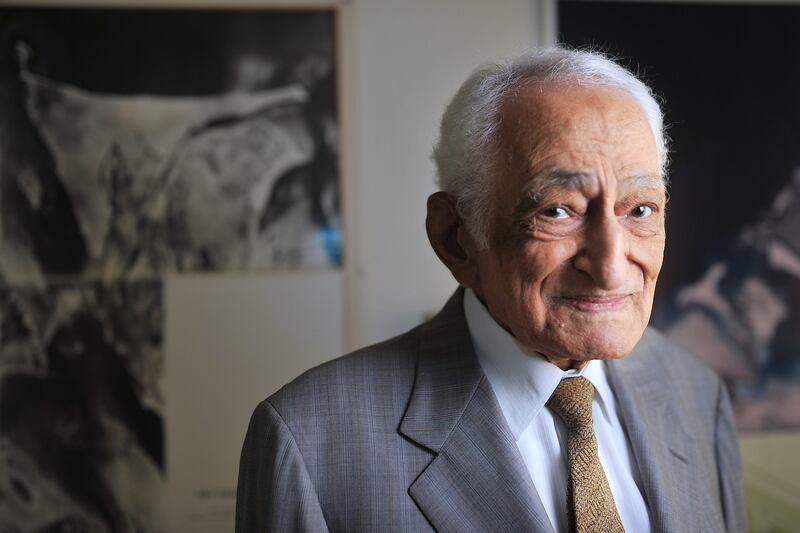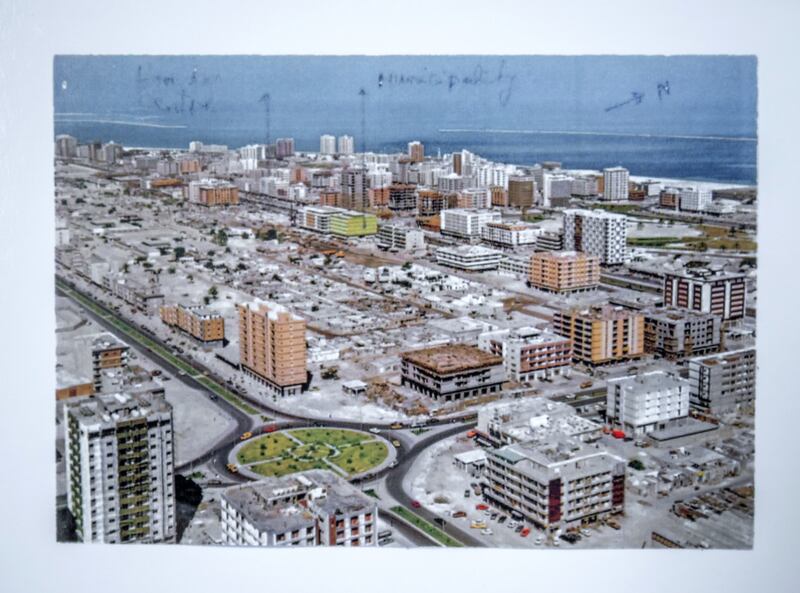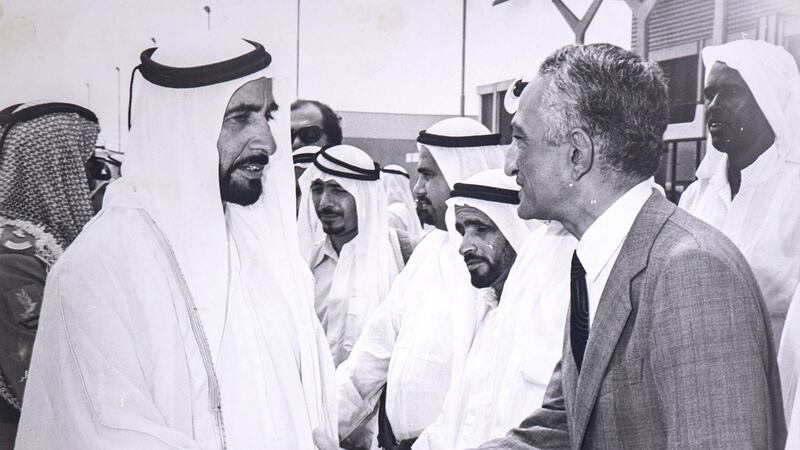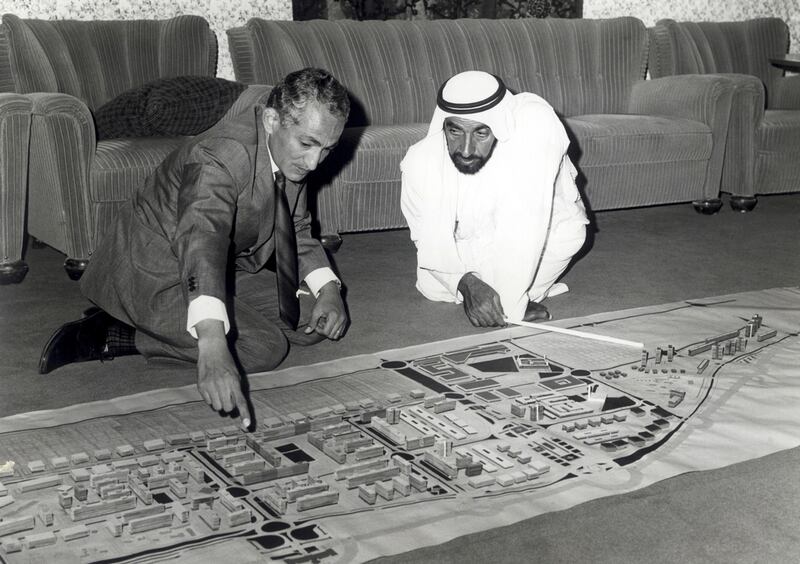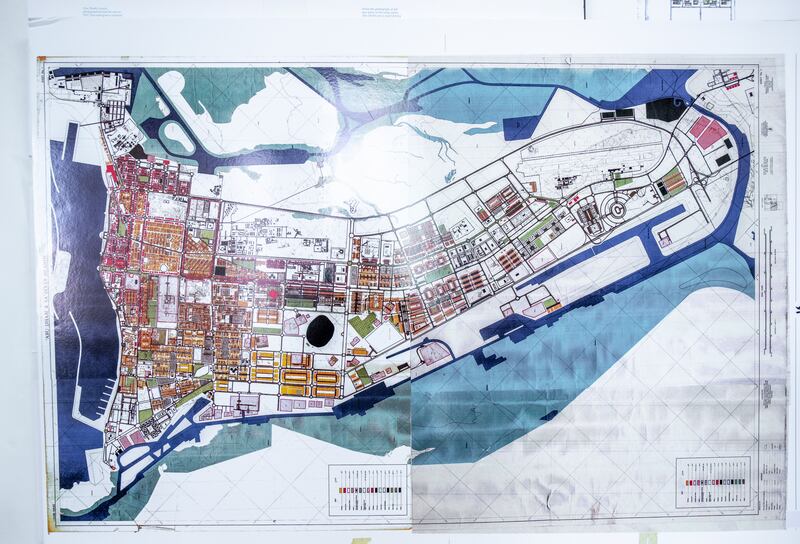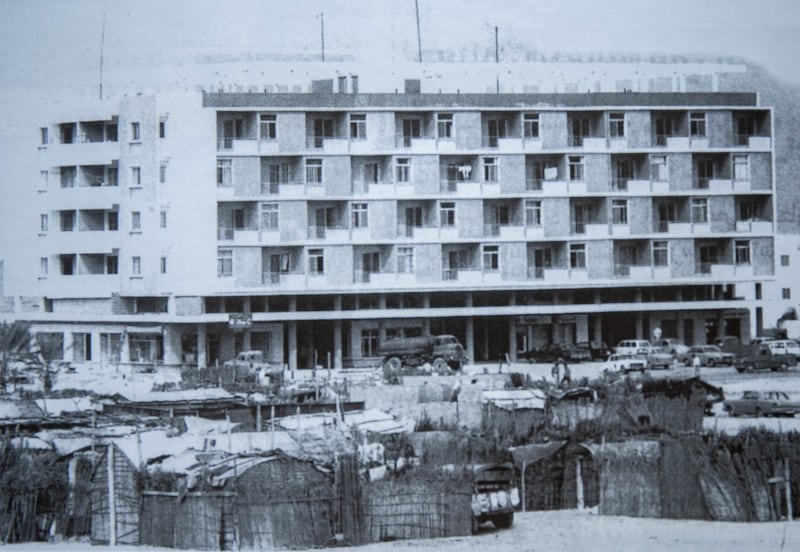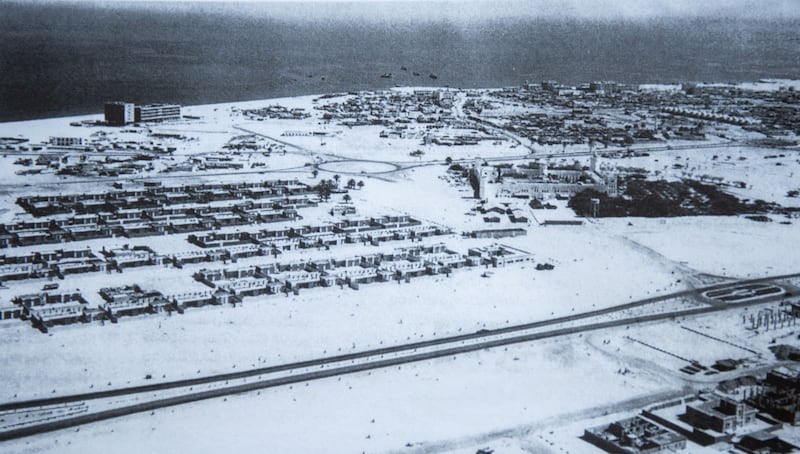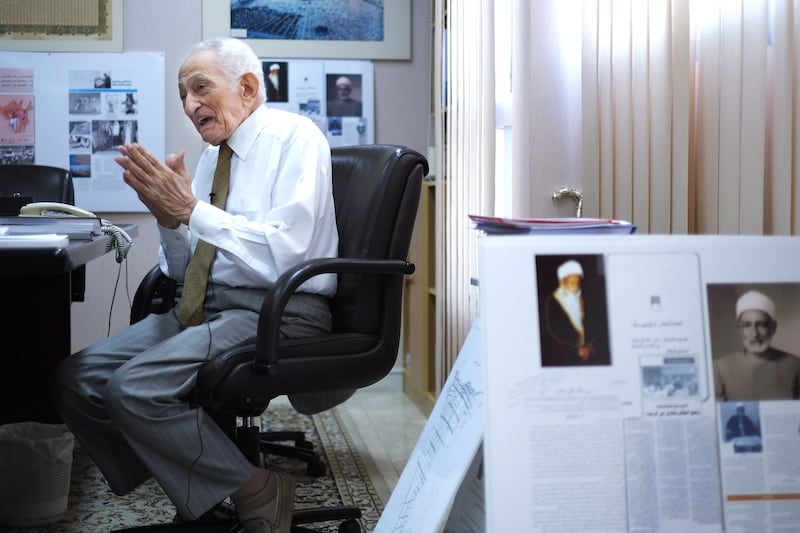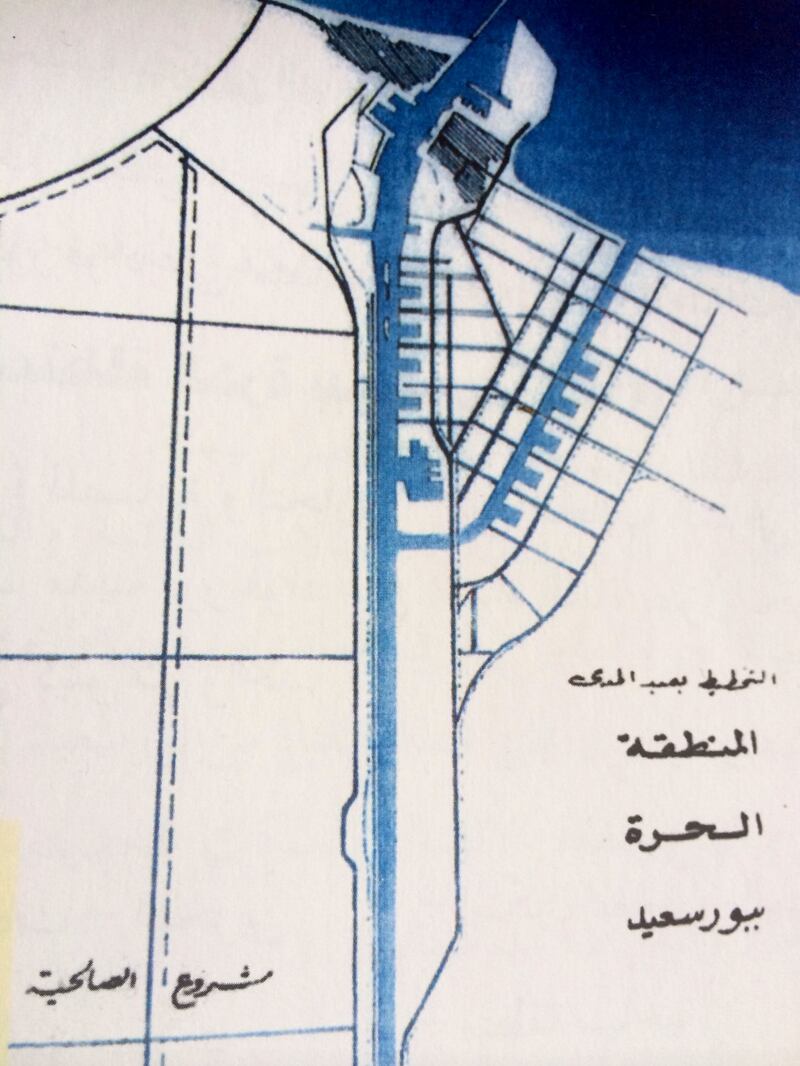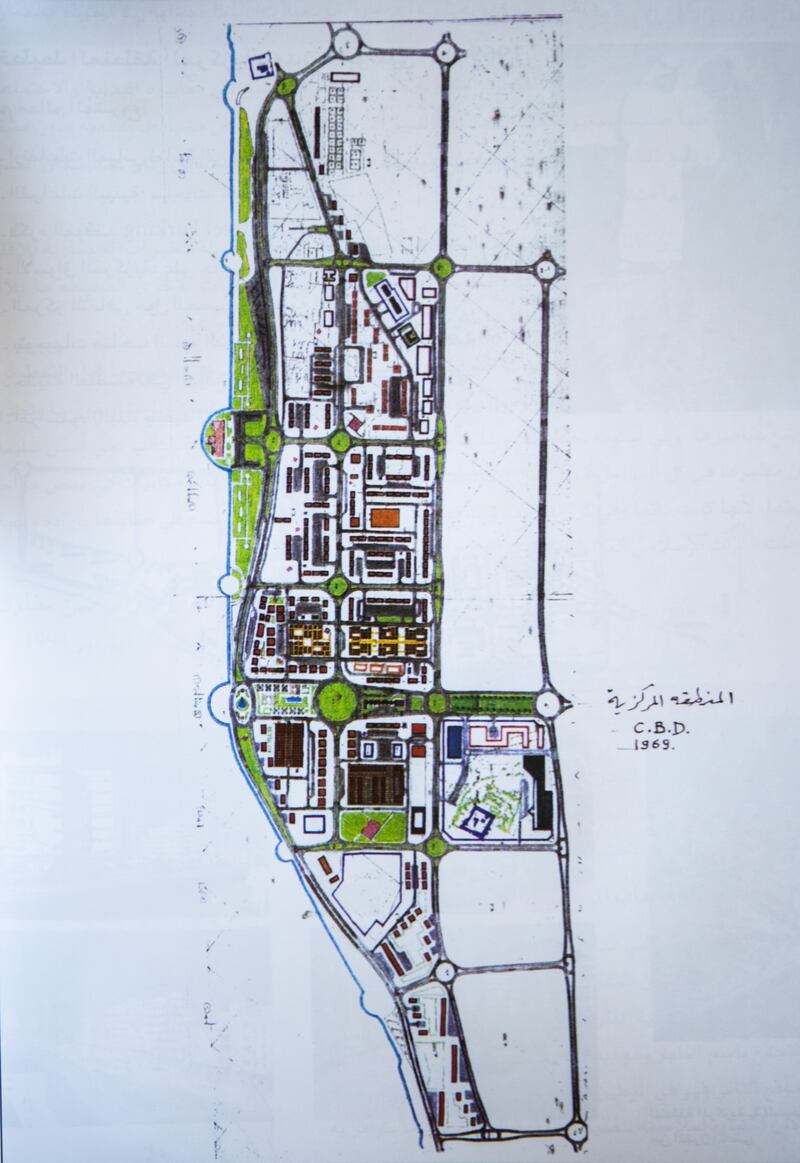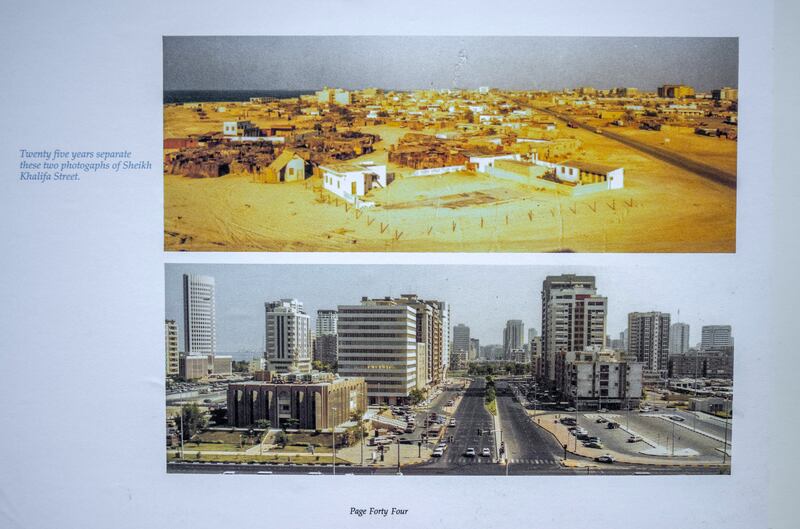Returning from a visit to Switzerland in 1968, Sheikh Zayed spotted an unfamiliar face in the crowd waiting to greet him at Abu Dhabi International Airport.
“Who is this man?” Sheikh Zayed asked an adviser, even as he shook his hand. Dr Abdulrahman Makhlouf was, in fact, the Ruler’s most recent appointment and, as the new city planner, would guide his vision for Abu Dhabi for the next seven years.
In an interview with The National in 2013, Dr Makhlouf, who died in his 98th year on Tuesday, recalled his conversations with Sheikh Zayed and his ideas for the names of the city streets
These were based on three concepts, firstly those members of Al Nahyan family who had played an important role in the development and progress of Abu Dhabi.
Secondly came the places that reflected the story of the Emirate – such as Delma Street after the island that was once a centre for pearl fishing.
Finally, they discussed the third concept on which Abu Dhabi would be based. “Sheikh Zayed wanted people who live here to be happy,” Dr Makhlouf said.
And so Al Saada, or “happiness street” was placed on the map. During this conversation with the Ruler, he was reminded, Dr Makhlouf said, of the Greek philosopher Plato who had written of the ideal city “in addition to fulfilling its basic function of providing shelter and protection to its residents, it must be a source of happiness”.
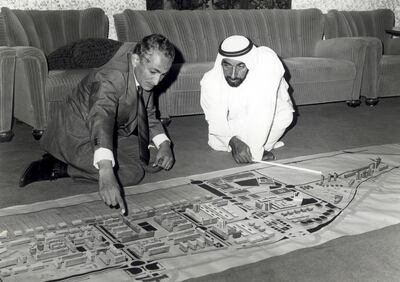
For Dr Makhlouf, Abu Dhabi was a source of happiness, and a place called home long after he stepped down from his role in 1978 and until his death on December 14, 2021.
Immaculate to the last in an elegant, well tailored suit, he was always generous with his time for discussions about his work and philosophies, speaking in a courteous, gentle tone that nevertheless did not hide his firm opinions, including the way to dress. “It is not dignified to be seen in public without a tie,” he once said.
Born in 1924 in Cairo, he came from a prosperous family noted for learning that included his grandfather, Sheikh Hasanian Mohammad Makhlouf, the Mufti of Egypt. “So my name sounded familiar,” he would say.
After studying architecture and town planning at Cairo University, he left to take his doctorate in Munich in 1953 on the advice of a professor who believed he would find inspiration in Germany’s efforts to rebuild its war-ravaged cities.
It was here that he absorbed town planning theories and practice across Europe and the West, but always with a view of returning to the Arab world.
Completing his studies with a thesis for a new neighbourhood in Gaza, the now Dr Makhlouf returned to Cairo to teach in 1957, but in less than year was on his way to Saudi Arabia after being nominated by the United Nations Programme for Technical Assistance as an expert to work on the planning of the holy cities of Makkah and Madinah.
After several years in the kingdom he returned to Cairo and another recommendation from the United Nations, who had been asked by Sheikh Zayed to find a replacement for Katsuhiko Takahashi, the Japanese town planner who laid the first foundations of the new city.
For Sheikh Zayed, Dr Makhlouf was the ideal candidate. “Sheikh Zayed wanted an Arab city planner. Someone he could communicate to directly about his vision without the need for a translator,” he said.
As head of the new Department for City Planning, hIs first task was to reject or revise the existing proposals, including one from the British consultants Halcrow who had already produced a masterplan for Dubai.
The Halcrow plan lacked ambition, he felt, with a ceiling on Abu Dhabi’s population of just 50,000. Dr Makhlouf believed a target five times larger was feasible, if property was supported by housing and infrastructure.
“One of the top British people there asked me, ‘Where will we get these people?’ and I told him, ‘If Sheikh Zayed wants a million people here tomorrow, he will push a button and open a door, and he will have a million people here’.”
The result was Report Number One, its completion hampered by the fact that at the time there was no map of Abu Dhabi until Dr Makhlouf drew one by hand.
His first proper meeting with Sheikh Zayed took place on the site of what is now the Intercontinental Hotel, which he remembered in another 2013 interview, this time with Todd Reisz, an architect who has written widely about the UAE.
“After some conversation, he asked me, “What are you going to do? Are you going to give us plans and say, ‘This is it,’ and do it? Or will you do what we want?”
The man who helped Sheikh Zayed plan Abu Dhabi dies aged 98
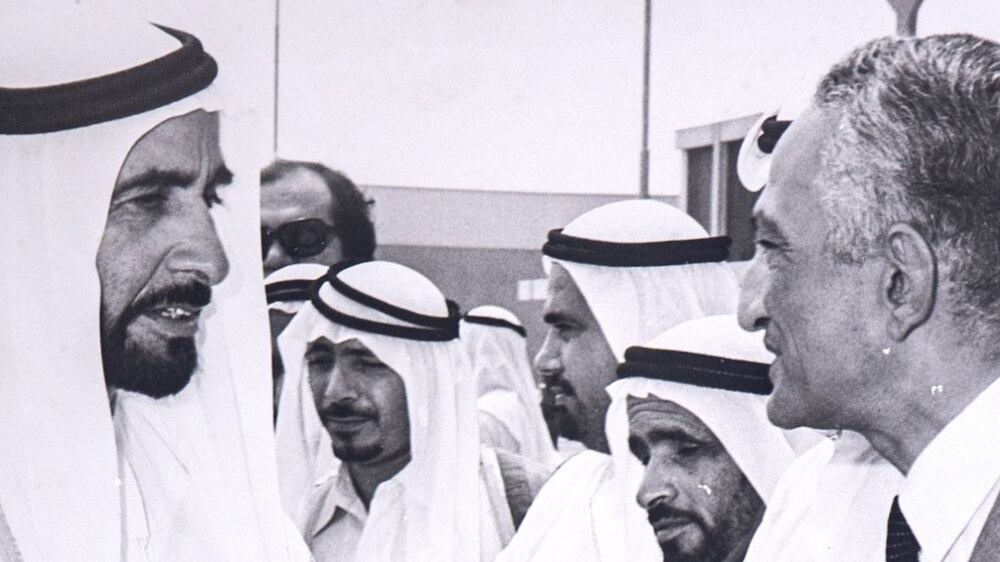
"I told him, 'I will give you alternatives, and you choose what you think is the best'. But of course this was my response. It would not be polite for me to tell him what to do. At the same time, I couldn’t tell him I would do what he wanted.”
On presented with the first model for the heart of the new city, one section caught the Ruler’s eye. “He asked me what is this? I told him the souq, with over 200 new shops. He said, ‘Let us start with this’.”
In the end, much of the city followed the Ruler’s vision, including the grid of straight streets. “Sheikh Zayed said to me, ‘I know where I am, and I know where I want to go, so why not use a straight line between the two points? We want a capital city for Abu Dhabi, and we need to get there as quickly as possible’.”
His surviving legacy includes the Zayed National Stadium – now Sports City – one of the capital’s most striking architectural designs, but as he several times observed in later life, of his work “nothing is left”.
He resigned in 1975, worn down by bureaucracy and the realisation that his vision of no building higher than two storeys was doomed by economics and market demands.
“At first, Sheikh Zayed refused to let me go and told them, “Use your heads. Learn from him!”, he told Reisz in their interview. “No one could say I was a thief. The only thing that one of them could say to Sheikh Zayed was 'You asked for this, and Makhlouf said, ‘No'.”
Abu Dhabi remained his home as he watched the city change beyond recognition, something that clearly disappointed him, although he rarely expressed it in public.
“Planners are like doctors,” he said in the Reisz interview. “They are happy when people arrive sick and leave healthy. When it is just your home, it is easy because you can control it, but when you are dealing with a city, the challenge is how to make everyone happy.”
A man of great faith, he would often turn to the lesson of Qaroun, an ancient king of Egypt whose vanity and conceit eventually brought about divine punishment, with everything he possessed swallowed by the earth. The story and its obvious lesson for his profession, he said humbled him.
From his grandfather, he told Reisz, “I learnt the Quran and the Arabic language. He insisted on correct pronunciation, not the colloquial. This helped me become a good writer.
“Part of becoming a good writer is to learn, but a bigger part is God’s gift to you. To write well you have to know the Quran and the hadiths. The Quran is written at a level higher than the human way of thinking. It is more than whatever you can think about.”
After leaving his post in planning, he lectured across the Arab world and in the 1980s became a lecturer in urban planning at UAE University. Later he worked as consultant at the Arab Office for Planning and Architecture. In 2017 he was presented with the Abu Dhabi Award.
Even with his strength and memory fading, he maintained a meticulous archive of his work in his office, which will now pass to the nation.
For his Abu Dhabi home, he settled next to the Grand Mosque and the burial place of Sheikh Zayed.
“I was building my house there when one day I saw His Highness picking out the spot where he would like to be buried,” he told The National in his 90th year.
“I have been lucky to be close to him in his life and later living near his final resting place. Allah have mercy upon his soul.”
